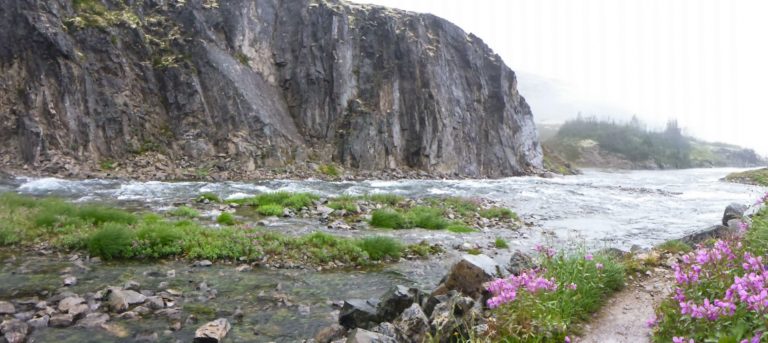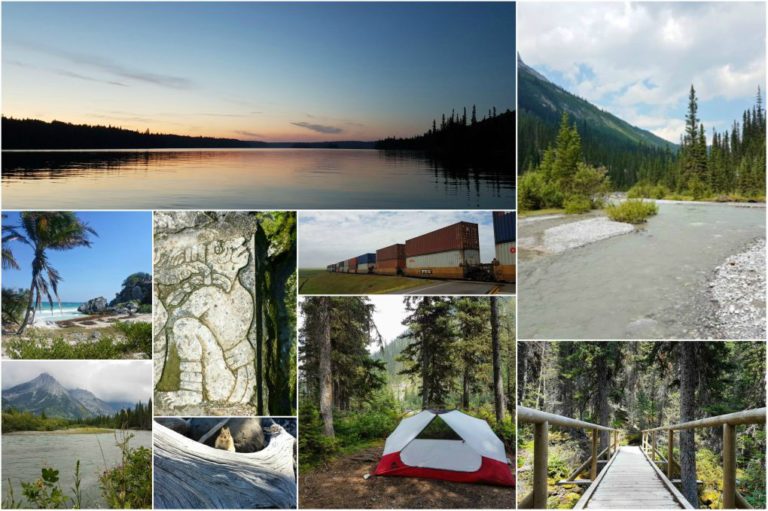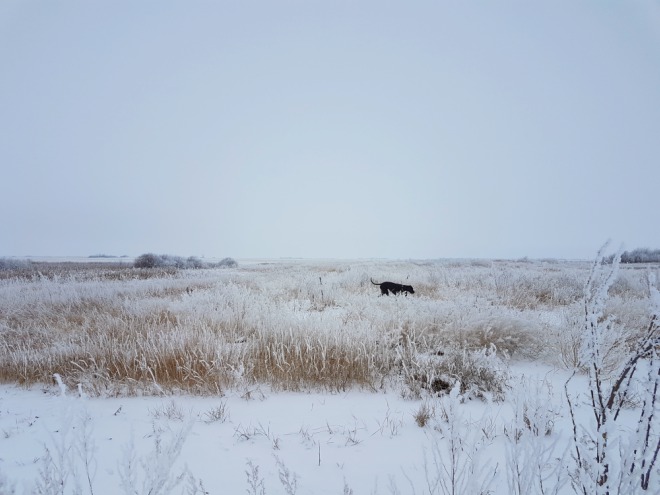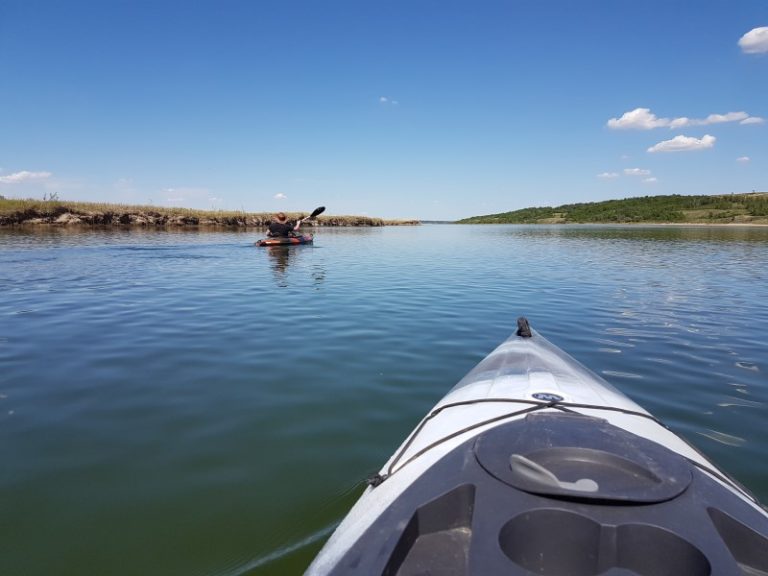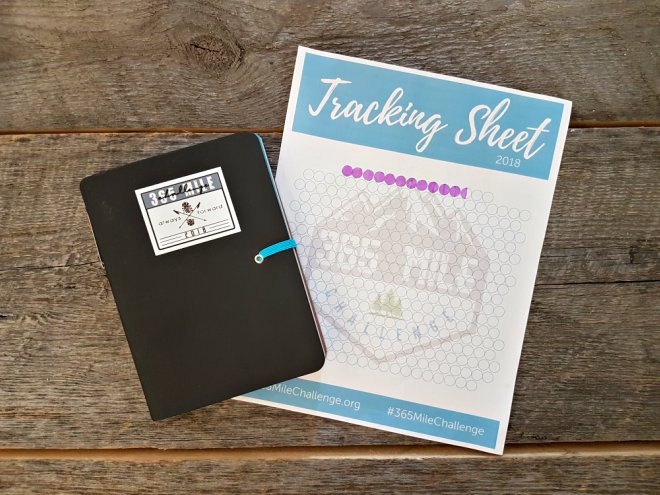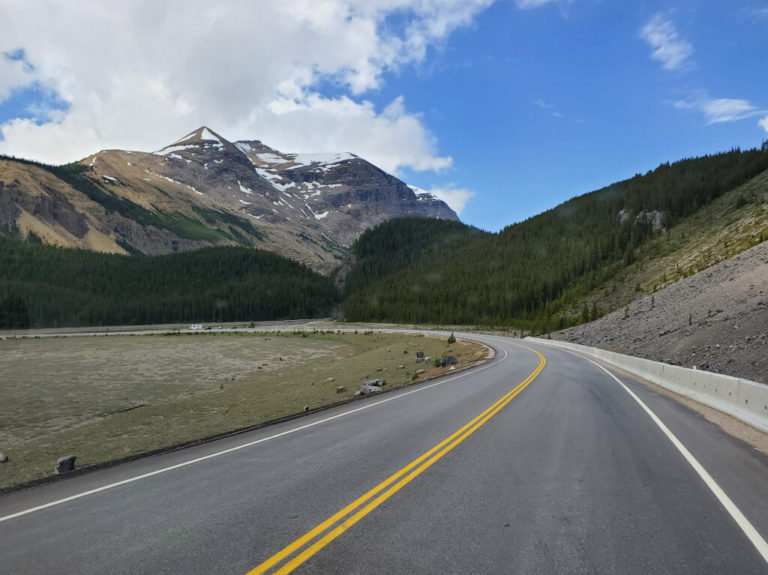BACKCOUNTRY PADDLING 101: LEAVING NO TRACE AND LESSENING YOUR IMPACT
Welcome to Backcountry Paddling 101, a series of posts designed to help you enjoy a backwater adventure.
In previous posts, we’ve talked a lot about being prepared and keeping yourself safe in the backcountry. Another very important aspect of playing in the wilderness is ensuring you leave it in the best possible shape you can. In our final post in this series, we’ll be talking all about leaving no trace and lessening your impact.
This post may include affiliate links. As an Amazon Associate I earn from qualifying purchases. Find more info in my privacy policy.
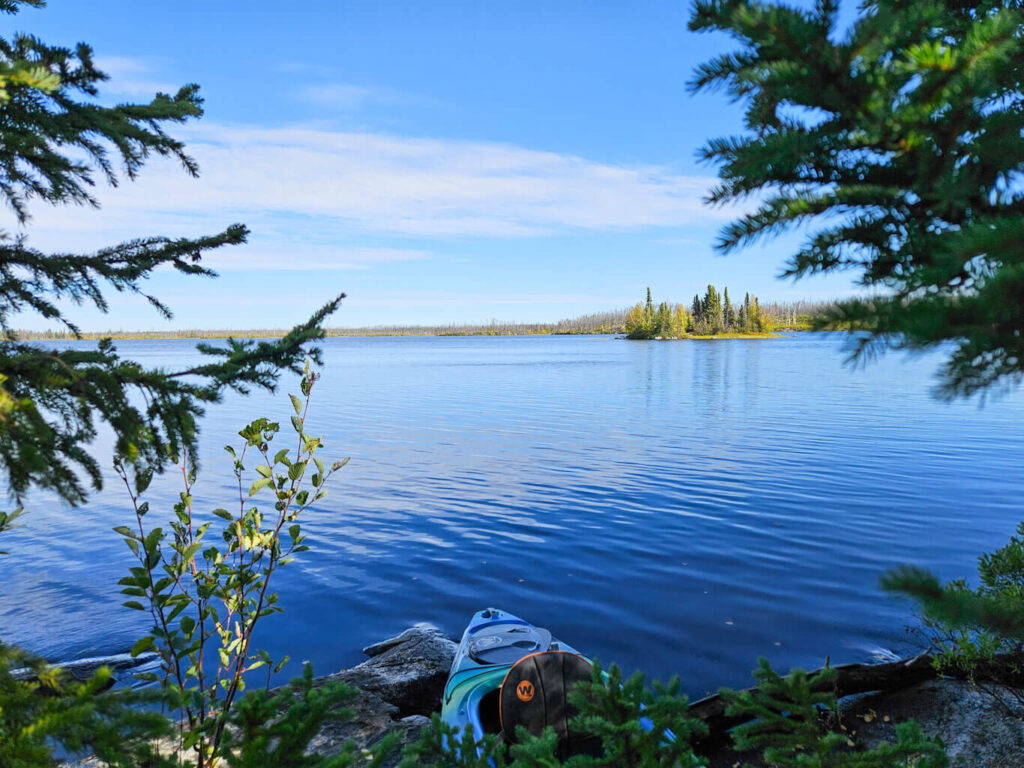
For more on everything you need to know about backcountry paddling, check out the other posts in the series:
BACKCOUNTRY PADDLING 101: TRIP PLANNING
BACKCOUNTRY PADDLING 101: ESSENTIAL GEAR FOR CANOE AND KAYAK CAMPING
Multi-day wilderness trips are, in my opinion, one of the best ways to get out and enjoy the beauty and benefits of nature. More and more people head out into the backcountry each year in search of everything from peaceful solitude to adrenaline-inducing adventure. Which is great – getting outside is good for you!
However, an important part of enjoying natural spaces is ensuring we do so in a responsible way. Not only do we want to leave the area pristine for the next person to experience it, we also want to minimize the impact we’re having on the plants and animals that call these places home.
Below, you’ll find an overview of the 7 principles of Leave No Trace and how these can help us lower our impact while in the backcountry, particularly while on paddling trips. We’ll also talk a bit about how to reduce waste while adventuring, why it’s important to follow rules and regulations, and much more!
THE SEVEN PRINCIPLES OF LEAVE NO TRACE
For those not familiar, Leave No Trace principles are a set of guidelines designed to help us humans enjoy the outdoors while leaving the least amount of impact possible.
Anyone who has gone on a paddle or hike only to come across things like garbage or used toilet paper (YUCK!) can understand why the obvious things, like not littering, are so important.
But LNT goes much further than that. These principles help us to consider how each decision and action we take in the backcountry can have large and lasting effects that we might not otherwise think about.
Below I go over each of the 7 principles, how they relate to multi-day paddling trips, and how they can inform how we eat, sleep, and even poop in the outdoors.
PRINCIPLE 1: PLAN AHEAD AND PREPARE
This is basically what this entire series on backcountry paddling is all about – to help you plan and prepare for your trip in a way that will help keep you safe and avoid any unnecessary damage to the backcountry.
Effective planning and prep will ensure you’re paddling, camping, and portaging in areas where it is appropriate to do so, help you reduce weight and waste, and keep you from ending up in situations you’re not able to handle.
This can help avoid things like setting up your tent on delicate vegetation in a protected ecosystem or having to rely on limited natural resources to cook meals because you didn’t test your camp stove and it isn’t working. It also ensures you are aware of rules and regulations in the area, which are in place for a reason.
I know a hiker who found an entire bunch of bananas left on a trail once because they got bruised and the people who brought them didn’t want to carry the extra weight anymore. That’s just bad planning and completely avoidable. That bunch of bananas could very easily cause changes to the natural behaviours of animals in the area, cause them to associate that space with food, and create a dangerous situation for future hikers.
This first step of planning and prep can take a lot of work, but if you’re reading through the posts in this series and following the workbooks, you’re on the right path.
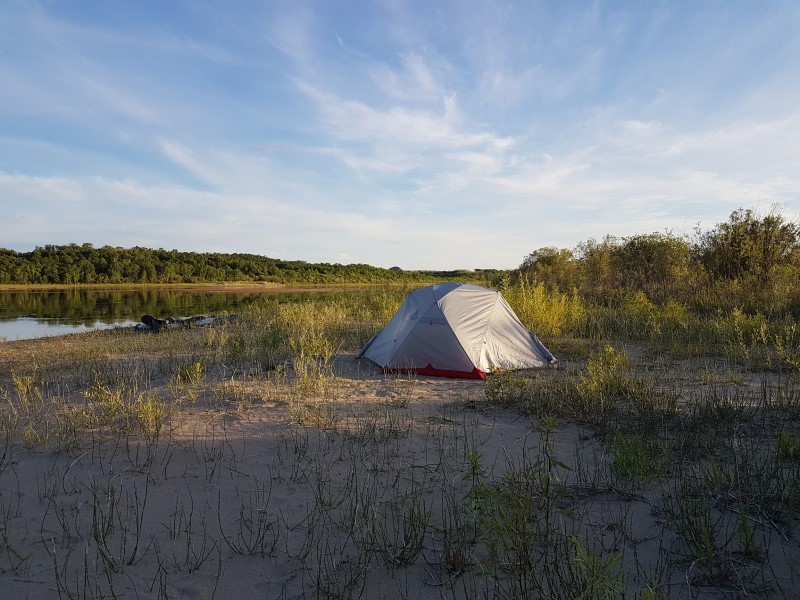
PRINCIPLE 2: TRAVEL AND CAMP ON DURABLE SURFACES
On a paddling trip, the majority of your travel will obviously take place on the water. But remembering the rule about durable surfaces is important during breaks, while portaging, and while camping overnight.
The idea here is to avoid damaging vegetation and compacting soils as much as possible. The most durable surfaces are rock, gravel, and sand so try to stick with these whenever possible.
A few general tips:
When landing and launching your watercraft, try to do so in areas with little vegetation.
If trails are present for portaging and around campsites, use them. If not, try to disperse impact by spreading out. Avoid taking shortcuts or crossing switchbacks as this can contribute to erosion and compaction.
If there are designated camping areas or areas where previous campsites have been established, use them. Otherwise try to limit damage to vegetation when setting up camping and cooking areas by using durable surfaces whenever possible.
PRINCIPLE 3: DISPOSE OF WASTE PROPERLY
GARBAGE
The rule is simple – pack it in, pack it out.
Do not leave behind, bury or burn trash, leftover food scraps, packaging, or things like apple cores or banana peels. Doing so can leave behind smells and rotting food which can attract animals to the area.
Dishwater should be strained and any bits of food should be packed out as well.
Take along a resealable bag to use as your designated garbage bag and dispose of it when you return home. Many people will use a Ziploc-style bag for this, but if you’re looking to reduce your plastic use consider designating (and clearly marking) a dry bag for garbage. You can empty, wash, and sanitize it once you’re home and then reuse it for your next trip.
WASTEWATER
The best practice for disposal of wastewater (from dish washing or bathing) will vary depending on the area in which you are paddling. I’ve paddled and hiked in areas where wastewater was to be disposed of in designated grey water pits, poured into catholes well away from water sources, and dumped directly into fast-moving water. It’s best to check regulations and recommendations before heading out to ensure you’re following the correct method for that particular area.
Again, any debris or food particles should be strained out and packed in your trash bag before disposing wastewater.
A note about bathing in the backcountry:
Gather some water and use a small amount of biodegradable soap to clean up at the end of the day. Avoid bathing directly in water sources and dispose of grey water away from the water/camp as this will allow the wastewater to filter through the soil.
Using wet wipes to shower is another easy and convenient way to stay clean outdoors. Pack them out in your trash bag.
HUMAN WASTE
This is another area where proper disposal will depend upon regulations and best practices in each specific area, so check with the land management authorities ahead of time.
Peeing outdoors is generally the least complicated. If it is possible to land your watercraft during the day, and for while you are in camp, try to find a spot about 200 feet away from trails, campsites, and water sources to relieve yourself.
Pack out or bury toilet paper or consider using a pee cloth to avoid creating waste altogether.
If you’re stuck on the water and need to go, it is generally acceptable to urinate into large bodies of water. In river canyons, this is usually the best practice anyway. The tricky part is finding a method that works for you, as you may have to contend with an unstable watercraft, restricting layers of clothing, and a lack of privacy. Pee funnels with an extension line can work well, as can custom-made pee bottles. I recommend testing out a few methods on day trips and finding what works best for you.
Pooping outdoors presents a new set of challenges as feces must be disposed of properly. In some cases, particularly in river canyons, this means packing it out. Larger river expeditions will often use a “groover” (a makeshift toilet that is brought along, set up at each campsite, and then packed out). Another option would be to use individual wag bags and pack them out with you.
If you’re in an area where burying your poop is acceptable, then dig a cathole at least 200 feet away from trails, water sources, and campsites. Catholes should be about 6 inches deep and wide. Dispose of feces and refill with soil. Toilet paper can also be buried in catholes or packed out.
If you’re paddling with your dog, the same rules apply – bury or pack out Fido’s poo.
How you deal with your period in the outdoors will depend on what you are comfortable with. Many women prefer to use a menstrual cup during outdoor adventures to reduce waste and hassle. The cup can be emptied into a cathole and rinsed with clean water from a bottle, if desired. If this doesn’t work for you, pads and tampons work too, but they will have to be packed out in a trash bag as they do not decompose well in a cathole. Wet wipes can be handy to have along for clean up, but they too must be packed out.
I recommend taking along what I affectionately refer to as my sh*t kit – a dry bag with a garden trowel, pee cloth, toilet paper, hand sanitizer, wet wipes, pads/tampons, and a disposal bag. This will keep all your “bathroom necessities” in one place that is easy to grab on the go.
REDUCING WASTE AND SINGLE-USE PLASTIC
One of the best ways to deal with waste is to avoid it in the first place. Think reduce and reuse as you’re planning, prepping, and packing for your trip. Many of these tips are mentioned throughout this and other posts in the series but I thought I’d reiterate them here.
Food will be the biggest producer of waste, so be mindful and get creative when planning this out. Pre-packaged freeze-dried meals are convenient, but if you’re looking to reduce waste then consider DIY meals.
Purchase bulk dried foods and package everything in reusable containers. Beeswax wraps and Passage Adventures’ paper-wrap packing method can also be useful when looking to avoid plastic.
Replace the Ziploc-style trash bag with a reusable dry bag designated for garbage. Another option is to wash and reuse resealable bags from home that would end up in the trash anyway (any type of food packaging with a zip top will work). At least this way they’re being reused before throwing them away.
Reduce toilet paper use by using a pee rag or Kula Cloth.
PRINCIPLE 4: LEAVE WHAT YOU FIND
Leaving what you find not only means that you shouldn’t unnecessarily remove things from the backcountry, it also means leaving things in the state in which you find them.
Things like carving trees, cutting branches, clearing vegetation, and building unnecessary fire rings and cairns can all contribute to the degradation of an area.
Often, the seemingly small actions we take as individuals appear to be harmless but can, in reality, have a massive impact. Before altering anything in the backcountry, consider the not-so-obvious effect it may have and think about what would happen if 10,000 other people did the same thing. If you don’t like the idea of that, then don’t do it yourself.
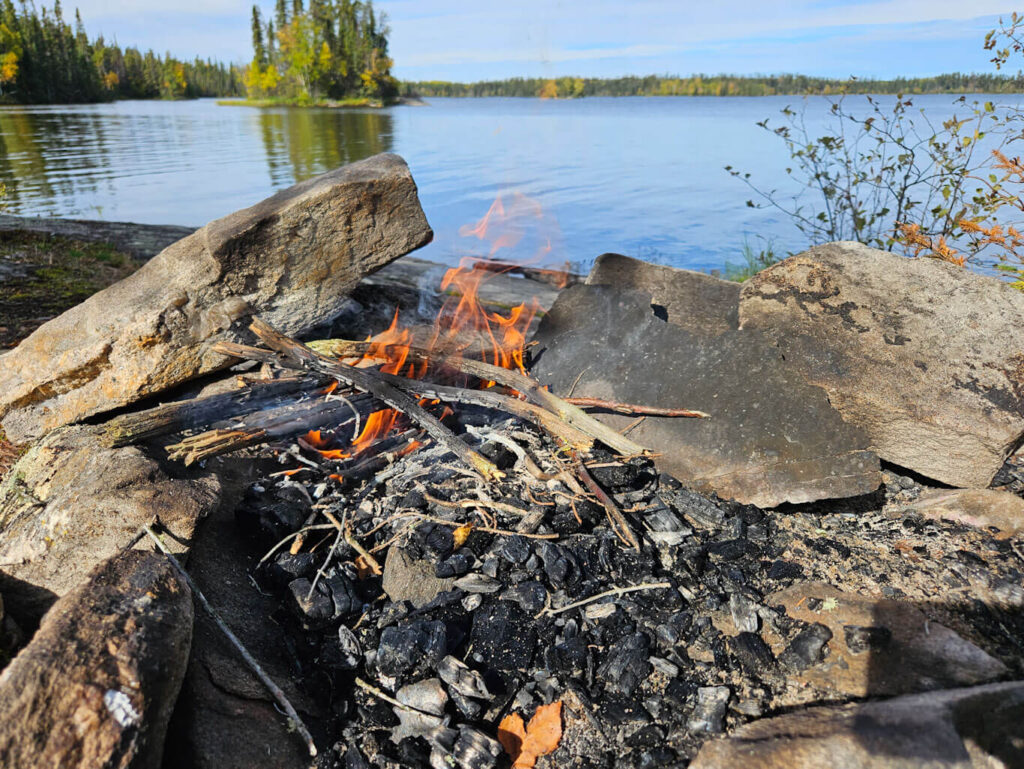
PRINCILE 5: MINIMIZE CAMPFIRE IMPACTS
Campfires can have one of the harshest impacts in backcountry settings. Over-collecting wood, scorching the earth, and leaving behind campfire debris are common ways that campers leave their trace.
I recommend carrying a camp stove to eliminate the need for campfires for cooking purposes. This will greatly reduce your use of firewood and give you the flexibility to not use a fire if the conditions aren’t appropriate.
However, sitting around a campfire can be a nice way to end a day on the water and building a fire may be a necessity in a survival situation. Because of this, it’s important to know how to build a fire responsibly and leave as little of an impact as possible.
Campfire Dos:
- Do check rules and regulations ahead of time to ensure that campfires are allowed in the area.
- Do check that there are no current fire bans or warnings in place.
- Do build fires in an existing firepit, if available.
- Do collect down and dead wood from the ground to burn. Dry driftwood also works well.
- Do keep fires small.
- Do extinguish the fire completely with water and stirring until cool to the touch.
- Do dispose of ash by spreading it around a large area. Some places (like river canyons) may require you to pack out ash.
- Do return the area to as close to its pre-fire state as possible. There should be no evidence that a fire was there at all.
Campfire don’ts:
- Don’t build a fire in places where they are restricted or if conditions are dry and dangerous.
- Don’t build a new fire ring if one is already present.
- Don’t build a large fire or use more wood than the area can support (ie: leave some for others!).
- Don’t burn garbage or food in the fire.
- Don’t leave behind a pile of ash or signs of the fire.
PRINCIPLE 6: RESPECT WILDLIFE
Observing wildlife in their natural state can be one of the most amazing parts of a backcountry trip. Getting a chance to see soaring birds, breaching whales, lumbering bears, and grazing moose might be a big part of the reason you’re out there in the first place. But it’s important to respect wildlife and to make sure we’re not frightening them or altering their natural behaviours.
It is always best to observe wildlife from a distance. Give them a wide berth and allow them room to leave the area if they choose to. A general rule of thumb is that if you’re causing the animal to react, you’re too close.
Do not approach an animal in order to get a photo and never touch, chase, pick up, or feed wildlife. If you have pets along, do not allow them to chase or get too close to wildlife either.
A pair of binoculars or a telephoto lens on your camera will help you get a better look from a safe distance.
These rules apply both while you’re on the water and in camp. If an animal is swimming nearby your boat, do not paddle towards it. Some areas have regulations on how close you can get to wildlife while on the water, so be sure to check into that prior to your trip.
Remember, some animals (even the cute little ones) can be dangerous – just ask the lady who was attacked by an otter while kayaking.
When setting up camp, remember to allow a buffer between your campsite and the water to ensure animals can access their water source freely. It’s also important to store food, garbage, and anything else with a scent securely while in camp. Not only will this ensure you don’t lose your food to wildlife, it will also keep everyone safer if animals do not become conditioned to obtaining food from humans.
PRINCIPLE 7: BE CONSIDERATE OF OTHERS
People head out into the backcountry for all sorts of reasons – maybe it’s to have fun, to find solitude, to connect with nature, to challenge themselves, or to find adventure. Your reasons may not align with every other backcountry user, but it’s important to respect everyone who’s out there.
Following the other 6 LNT principles is a good place to start. By planning ahead to avoid bad situations, not altering natural spaces, and not leaving behind trash, waste, and evidence of your time there, you’re already leaving the backcountry in a state that others can enjoy.
Beyond this, paddlers should be considerate and thoughtful when sharing the backcountry with others. Set up your camp in a way that doesn’t disturb other campers. Keep noise levels down. If you’re traveling in a larger group but camping in designated areas, try not to overrun the camp. Don’t allow pets to run free and disturb others.
Basically, it boils down to taking that extra second to think about how your actions might impact others and treating them as you would want to be treated. This will make for a much more enjoyable experience for everyone.
LNT can be overwhelming for those not familiar with the topic. It can add seemingly endless “rules” to follow and make simple actions more complicated. But by following these guidelines and making the extra effort we can all contribute to a better backcountry experience for ourselves, the plants and animals who live there, and for future generations to enjoy.
I hope these tips for leaving no trace and lessening your impact while paddling in the backcountry only serve to enhance your wilderness experience!
For more on everything you need to know about backcountry paddling, check out the other posts in the series:
BACKCOUNTRY PADDLING 101: TRIP PLANNING
BACKCOUNTRY PADDLING 101: ESSENTIAL GEAR FOR CANOE AND KAYAK CAMPING

